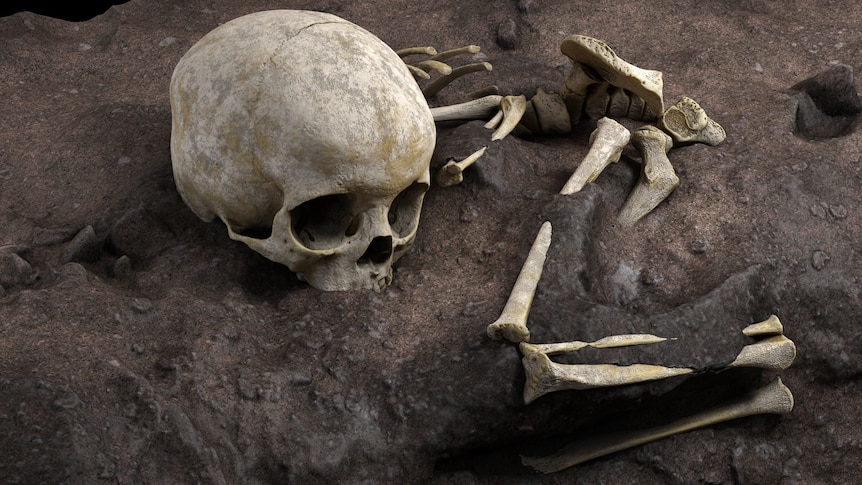Archaeological Breakthrough: Oldest Burial Site Unearthed in South Africa Sheds Light on Human Evolution

In the fascinating journey of human evolution, palaeontologists in South Africa have made a stunning archaeological discovery, uncovering what is now believed to be the oldest known burial site in the world..The site contains the remains of Homo naledi, a Stone Age hominid species previously thought to lack complex behavior. Led by renowned palaeoanthropologist Lee Berger, the team of researchers made this groundbreaking find deep within a cave system located in the Cradle of Humankind, a UNESCO world heritage site near Johannesburg.
According to the scientists, the burial site, buried approximately 30 meters (100 feet) underground, predates any previous evidence of Homo sapiens interments by at least 100,000 years. The significance of this discovery challenges the current understanding of human evolution, as it contradicts the notion that complex behaviors, such as burial rituals, were only possible with the development of larger brains.
The previous oldest burials found in the Middle East and Africa dated back around 100,000 years and belonged to Homo sapiens. However, the newly unearthed burials in South Africa, dating back to at least 200,000 BC, belong to Homo naledi, a primitive species that existed at the intersection between apes and modern humans. These individuals had small brains about the size of oranges and stood approximately 1.5 meters (five feet) tall. Their unique characteristics have already challenged the linear understanding of human evolution.
The burial site discovered in the “Rising Star” cave system, which gave Homo naledi its name, contains oval-shaped interments that were deliberately dug and filled in to cover the bodies. At least five individuals were found in these graves. This evidence suggests that mortuary practices were not limited to Homo sapiens or other hominins with larger brains, as previously believed.
The research team also made another fascinating discovery in the vicinity of the burial site. Engravings in the form of geometric shapes, including a rough hashtag figure, were found on cave pillar surfaces that appeared to have been purposely smoothed. This finding challenges the notion that symbolic practices were exclusively a human invention, potentially indicating that Homo naledi was capable of complex emotional and cognitive behaviors.
While the implications of these discoveries require further analysis and peer review, they have the potential to reshape our understanding of human evolution. The researchers believe that burial rituals, meaning-making, and even forms of “art” may have a far more intricate and non-human history than previously imagined. This groundbreaking revelation has sparked excitement and interest among experts in the field, though it is expected to raise some debate and skepticism.
Lee Berger, who has faced criticism in the past for his conclusions, stands by the significance of these findings. He stated, “We’re about to tell the world that’s not true,” referring to the belief that larger brains were necessary for complex behavior.
As the scientific community eagerly awaits further validation and exploration of these extraordinary findings, the ancient burial site in South Africa provides new insights into the complex evolution of our species and challenges long-held assumptions about the origins of human behavior.


